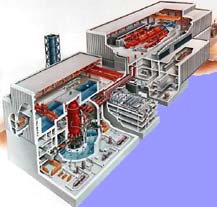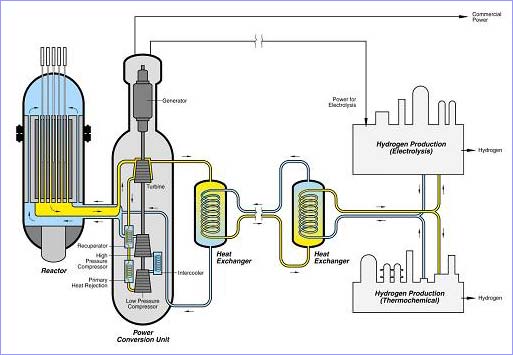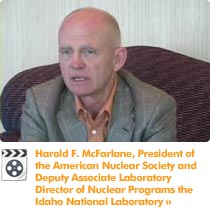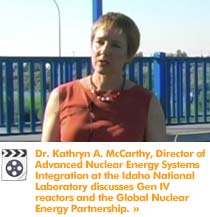

By Dean Stanley
By the year 2050, world population is expected to reach 10 billion with most of those people demanding more and more energy as they “strive for a better quality of life.” This was the message of a U.S. Department of Energy (DOE) report published late in 2002. Entitled “A Technology Road Map for Generation IV Nuclear Energy Systems,” the report outlined the steps needed to move nuclear power to the forefront of energy production in the decades to come.
In 2002, there were 438 operating nuclear plants worldwide, providing 16 percent of the world’s electricity -- “the largest share of non-greenhouse-gas-emitting sources,” according to the DOE. Most every one of these power plants utilizes either a Gen II or Gen III light water reactor (LWR) design, neither of which can make the best use of nuclear fuel.

Gen III and III+ reactors, such this General Electric Advanced Boiling Water Reactor (ABWR), offer improvements in the areas of passive safety and fuel technology. The first Gen III power plants went online in Japan in 1996.
Just like the 100-plus commercial nuclear plants in the U.S., these current generation reactors create spent nuclear fuel, known generically as “waste,” which then must be disposed of. In the United States, despite resistance, the Yucca Mountain repository has been created to accommodate the current U.S. stockpile of spent fuel, but little more. This is where Gen IV reactors will provide a key benefit.
An International Effort
Gen IV reactors are a set of theoretical nuclear reactor designs currently being researched by various nations around the world as part of the Generation IV International Forum (GIF). Six Gen IV designs have been settled on based on eight technology goals, with improved safety and proliferation resistance being at the top of the list. Other goals include minimized waste, better natural resource utilization, and decreased construction and operating costs.
These designs include the very-high temperature reactor (VHTR); supercritical water-cooled reactor; molten-salt reactor (MSR); sodium-cooled fast reactor (SFR); gas fast reactor (GFR); and lead-cooled fast reactor (LFR). These last three “fast” reactors are breeder designs, which can be used to create more fuel.

Using inert helium as a coolant, the VHTR reactor is the front-running Gen IV design and attributes its efficiency to a 900-degree Celsius outlet temperature, from which hydrogen or electricity could be produced.
Entire contents © 2006 Corland Publishing. Use of editorial content without permission is strictly prohibited.
All Rights Reserved. Privacy Policy Legal Contact Us. Site developed by ICON.




